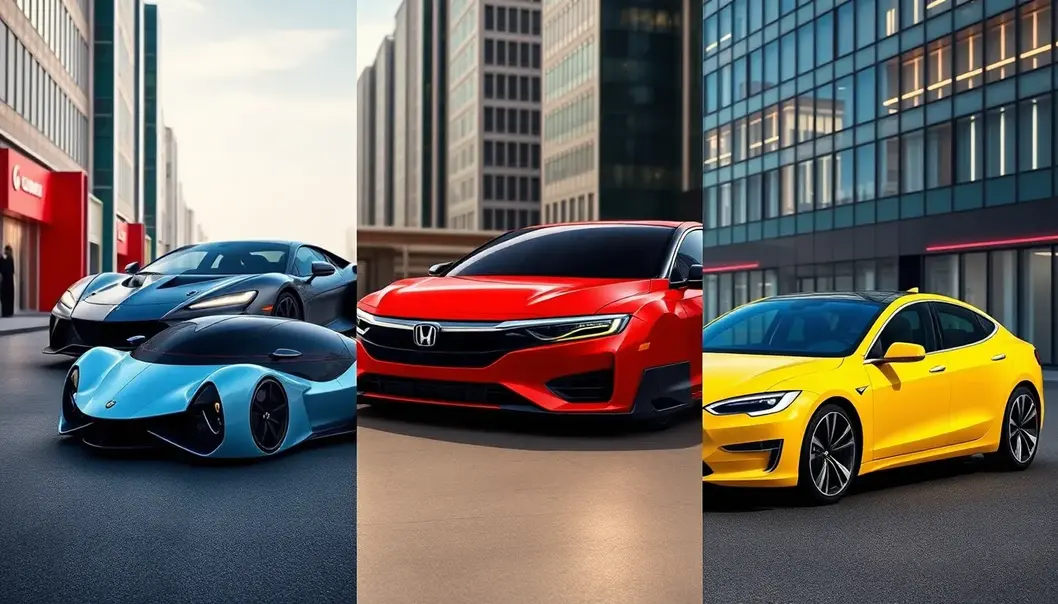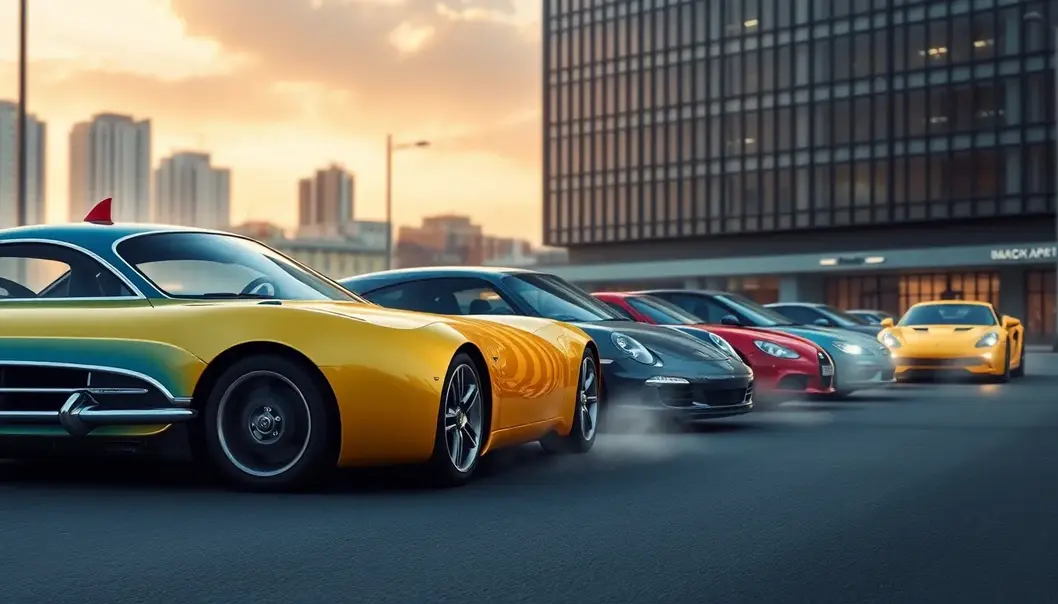Buckle up, car enthusiasts! Let’s take a ride through time exploring the flashy and radically changing design landscapes of automobiles. From the roaring 1920s to the futuristic evocations of today, car designs have reinvented themselves as icons of style and innovation. Each decade tells a story of cultural trends, advancements in technology, and the ever-changing tastes of people, transforming these metal machines into personal expressions of freedom and identity. Curious to see how cars zoomed from boxy buggies to sleek, eco-friendly rides? Hop in, and let’s hit the road with a spin through the past 100 years of vehicle transformation!
Retro Rides: 1920s to 1960s

The journey of car design from the 1920s to the 1960s mirrors profound societal shifts and technological advancements. The 1920s, often referred to as the ‘Roaring Twenties,’ was a period marked by economic prosperity and an exuberance for modernity. This was reflected in the automobile industry, where cars transitioned from being mere transport machines to symbols of style and freedom. Designs became more sophisticated, bypassing the boxy, utilitarian looks of the earlier years. Sleek lines and attention to comfort started to influence designs, signaling a shift towards the car being an integral part of social identity.
As the 1930s approached, the onset of the Great Depression fostered a need for practicality and economy in design. However, it was also a time when aerodynamic principles began to infiltrate automotive design, influenced by advancements in aircraft design. The introduction of streamlined shapes reduced wind resistance, increasing the efficiency and speed of vehicles. While economic hardships challenged the industry, technical innovations carried on, paving the way for the vibrant aesthetics of the post-war era.
The 1940s witnessed the temporary halt of civilian car production during World War II, as manufacturers pivoted towards war efforts. Post-war, the late 1940s and early 50s ushered in a period of optimism and a keen appetite for innovation. This era saw the advent of tailfins, an element inspired by the aerospace industry. These flamboyant features captured the spirit of post-war America, characterized by rapid industrial growth and a fascination with exploration. Ornamentation became bolder, chrome trims gleamed, and car colors exploded from the somber tones of wartime to vibrant hues that matched the decade’s exuberant optimism.
By the 1960s, car design embodied the spirit of rebellion and counterculture, reflecting the social transformation of the era. The focus shifted to compact and sporty models, setting the stage for the muscle car era. The movement towards more powerful and faster cars mirrored the decade’s cultural revolution, illustrating a palpable shift in consumer desires. Imbued with a sense of individuality, these cars were not just machines; they were expressions of freedom and style. This period marked a significant transformation as automobiles continued to intertwine with societal narratives, setting the stage for the dramatic changes seen in the decades that followed.
The evolution from the 1920s to the late 1960s was not only about changing designs but also about cars becoming vehicles of cultural expression. This period established the automobile as an essential element of personal identity, setting a precedent for the customized and diversified designs we value in cars today.
Futuristic Flash: 1970s to Today

The 1970s marked a pivotal era in car design that truly set the stage for futuristic aspirations. As the world grappled with an oil crisis, automobile manufacturers turned their attention to aerodynamics and fuel efficiency. The rise of wind tunnel testing transformed the art of car design into an exact science, as sleeker profiles and lowered drag coefficients became paramount. This era prioritized lightweight materials, balancing aesthetics with performance.
The 1980s saw digital technologies infiltrate the design space, ushering in a new wave of innovation. With the advent of computer-aided design tools, auto designers could explore complex curves and surfaces that were once deemed impossible. Interiors began to feature early versions of digital displays, subtly hinting at the eventual integration of fully digital dashboards. The decade also witnessed a growing environmental awareness, prompting the initial steps towards creating more sustainable vehicles.
As we entered the 1990s and beyond, safety and environmental regulations tightened globally. This led to the inclusion of crumple zones, airbags, and safety sensors, shifting the focus from only aesthetics to include functionality and passenger protection. Designers crafted vehicles with an eye towards minimizing their ecological footprint. This manifested in the form of hybrid technology, steadily gaining traction as a viable alternative to traditional combustion engines.
Into the 21st century, the car design landscape navigated towards electric mobility and autonomous capabilities. Designers embraced energy-efficient LEDs, recycled materials, and alternative powertrains, as environmental concerns took center stage. The emergence of electric vehicles (EVs) spurred a radical rethink of traditional design forms, freeing cars from the constraints of internal combustion engines.
Today’s cutting-edge designs emphasize connectivity and personalization. With the rising demand for infotainment, cars have become moving digital hubs. The focus has shifted towards creating more intuitive user interfaces that seamlessly integrate with our mobile tech-centric lifestyles. Meanwhile, advanced driver-assistance systems (ADAS) continue to push boundaries, transforming the driving experience from active to passive leisure.
In understanding recent car design trends and technological advancements, one can appreciate the profound impact they have on other facets of innovation beyond cars. Keeping pace with advancements in vehicular design could induce inspiration for those interested in product design, like those perusing Warhol Prints’ blog.
In the blink of an eye, the evolution from the aerodynamic forms of the 1970s to today’s high-tech eco-conscious designs illustrates how technology and environmental awareness have reshaped our automotive future. As this journey continues, the drive towards even more innovative, sustainable solutions shows no sign of slowing down.
Final words
Car design keeps evolving, balancing style and technology to meet the needs of the future. From nostalgic classics to cutting-edge electric models, these transformations not only reflect our dreams but shape our technological paths. Ready to ride the next wave of car innovation? Let your imagination rev up!
Want to dive into the future of car designs? Check out our weekly updates and exclusive insights!
Learn more: https://www.futureofcardesigns.com
About us
The Auto Innovators Hub offers weekly updates, expert insights, and exclusive features on upcoming car design innovations and trends, aiming to keep car enthusiasts ahead of the curve.



